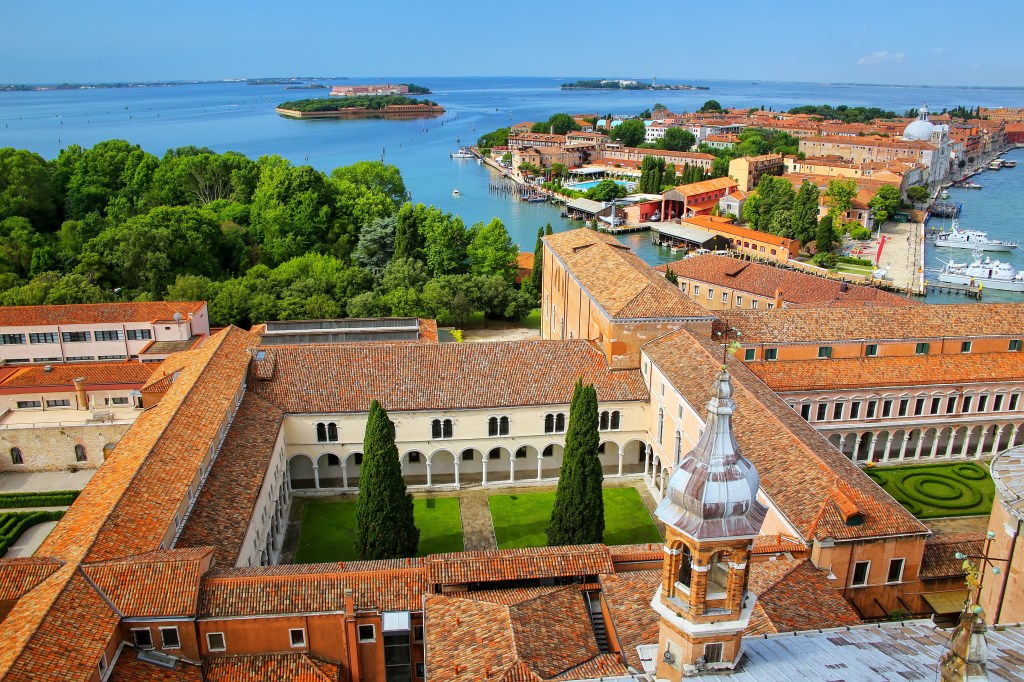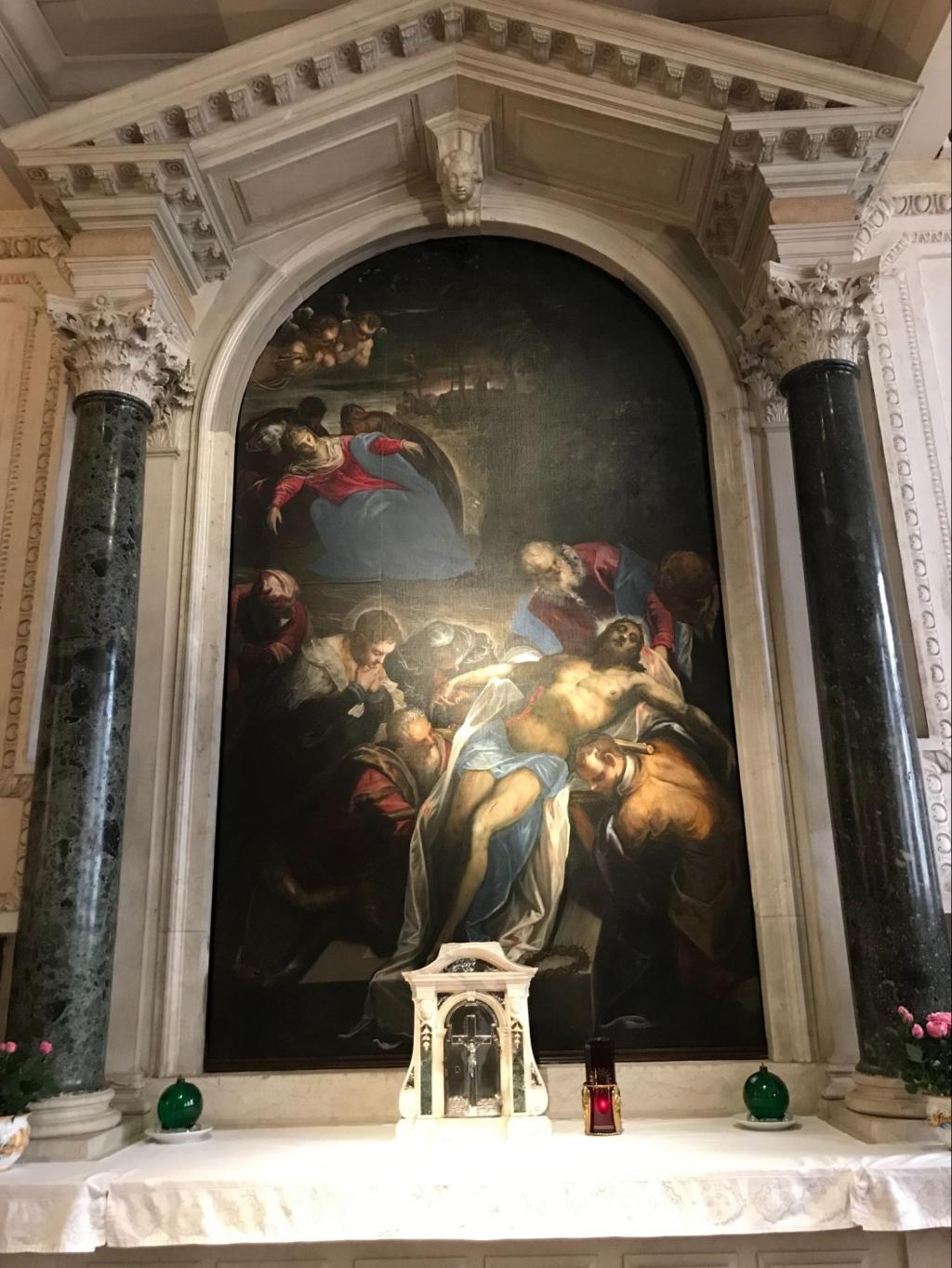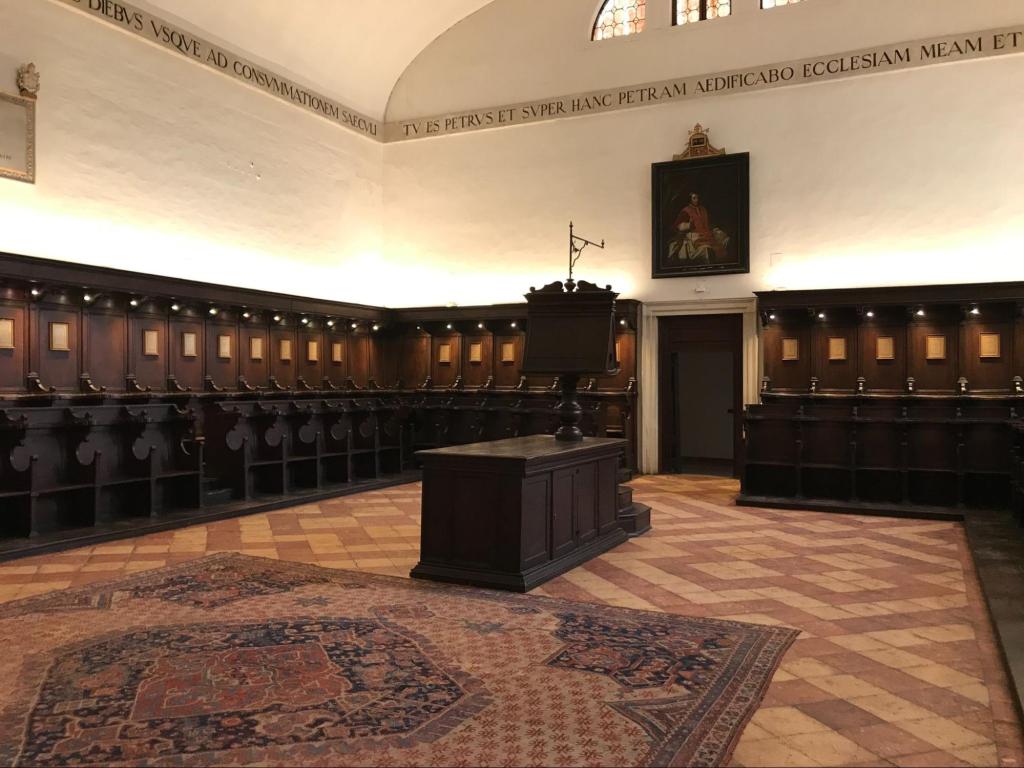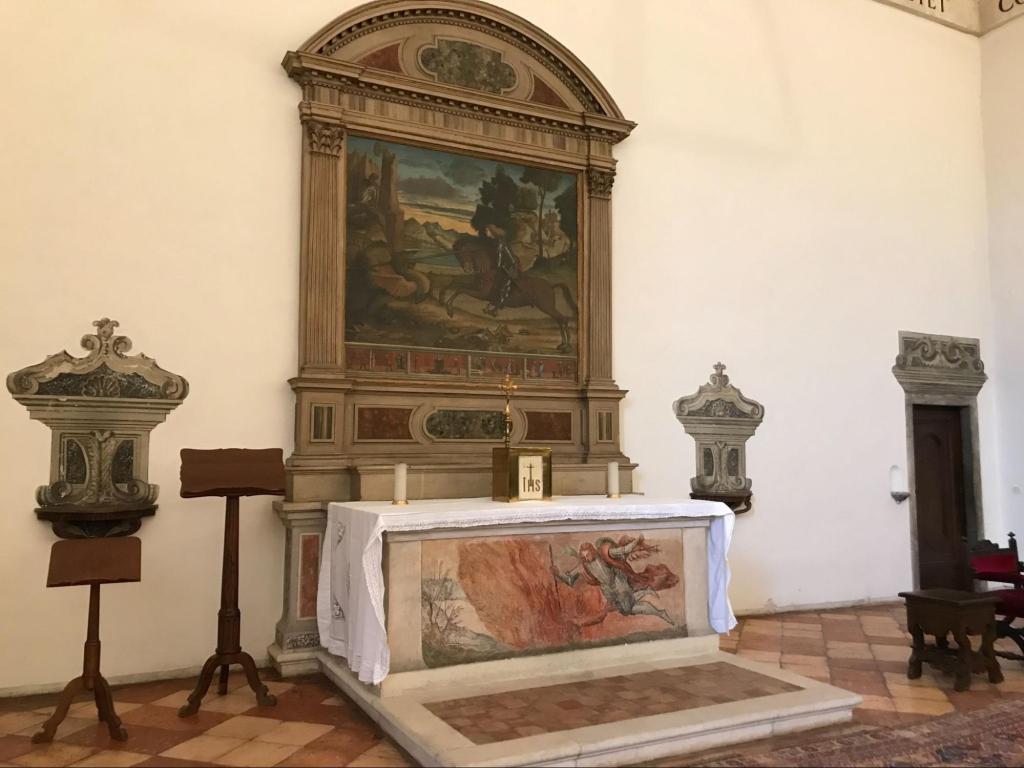Between 1799 and 1800, Saint George’s Island in Venice hosted the last conclave outside Rome. Report from the places where, in the midst of the French Revolution and after much delay, Pope Pius VII was elected.
On August 19, 1799, Pope Pius VI died in Valence, France, where he was a prisoner of the revolutionary armies. He is buried civilly in the municipal cemetery. The situation for the Church was disastrous: it found itself without a leader but also without a territory, since the Papal States were dissolved in 1798. Rome was in the hands of the French, who plundered Saint Peter’s Basilica. Pius VI had anticipated this situation by publishing an ordinance which decreed that the conclave would be held in the city with the most cardinals. At that time, the college of cardinals only had 45 members, who were scattered throughout Europe. Finding the right place for a conclave, despite the directives of Pius VI, is delicate. The cardinals eventually accepted the offer of Holy Roman Emperor Francis II, who offered to fully finance a conclave in Venice, which had been Austrian since the signing of the Treaty of Campo Formio in 1797.
The place chosen to host the conclave is Saint-Georges-Majeur Island, a small plot of land located at the entrance to the Grand Canal which has been occupied by a Benedictine monastery since the 10th century. An intellectual, artistic and spiritual center known throughout Europe since the Middle Ages, it houses a magnificent basilica designed by the architect Andrea Palladio. During their visit in 1797, the French plundered the place extensively, taking with them the Wedding at Cana by Veronese, which can still be found today in the Louvre. But the Benedictines remained, as evidenced even today by the presence of two monks who are now attached to the largest Benedictine monastery in Italy, Praglia.

Shutterstock
The location of the conclave is not in the large volumes of the Palladian basilica, which is open to the public and regularly occupied by exhibitions of contemporary sacred art organized by the Benedicti Claustra Onlus organization. To access the room that is today called the ‘conclave room’, you must go upstairs in an adjoining building and accessible only by appointment. Before going up there, a detour is necessary by the chapel of the Deposition, named in reference to Tintoretto’s ultimate masterpiece, a Deposition in the Sepulcher which is located behind the altar. Today it is the daily place of prayer for the small Benedictine community.

CD / ALETEIA
But let’s return to the Synod which opens in November, in the presence of 33 cardinals, mainly Italian, the figure finally reaching 35 including the latecomers. These cardinals are installed in the ‘ coro notturno ‘, that is to say the chapel to which the monks went to pray during the night. A place of silence and prayer, adequate to designate a pope capable of bringing the Church out of the shadows in which it finds itself plunged.

CD / ALETEIA
The white plastered vault contrasts with the flamboyant ceiling painted by Michelangelo of the Sistine Chapel, but the room also has its artistic wonders. The furnishings are minimal: dark wood stalls, a matching central unit and a high altar. The latter immediately catches the eye, because of the painting above it. It is Saint George and the Dragon by Andrea Carpaccio, which represents the 3rd century saint piercing his opponent through and through with his spear. Historians believe that the painting was probably painted for the basilica, as it is dedicated not only to the protagonist of the painting, but also to Saint Stephen, whose martyrdom is depicted in the background.

CD / ALETEIA
A political battle
Beneath this epic scene, another battle, more political, took place between the 35 participating cardinals, with the main issue being the response to the changes brought about by the French Revolution. Things are all the more complicated as the camerlengo – who has the powers of the pope during the vacancy – dies in the middle of the conclave. The arbiter of the debates, however, was Cardinal Consalvi, elected secretary of the conclave – and who would subsequently become one of the most remarkable secretaries of state in history. Another major player is Cardinal Franz von Herzan, who arrived late and represents the Emperor of Austria. The latter, like the King of Spain – and at one time the King of France – has the right of exclusivity, or a right of veto during the conclave. Since the conclave is taking place at his home, the emperor intends to install on the throne of Peter a pontiff who is favorable to him. He asked Herzan to send the message that he will refuse all cardinals coming from France, Spain, Genoa or Naples.
Two candidates were opposed: Cardinal Mattei, archpriest of Saint-Pierre in Rome and taking a hard line against the Revolution, and Cardinal Bellisomi, bishop of Cesena – then under French domination – who seemed more able to negotiate. Voting continued for many days and Bellisomi finally received enough votes to be elected, but Cardinal Herzan used the threat of an imperial veto to block his election. The appearance of a third ‘candidate’, Cardinal Hyacinthe-Sigismond Gerdil – a Savoyard who heads the Congregation of the Index – further complicates the vote. The maneuvers are increasing, Spain is also threatening to use its veto against Cardinal Mattei. The conclave appears to be stuck at the end of January. February changes nothing, no candidacy emerges in Venice.
The discreet Barnaba Chiaramonti
In March, the name of the discreet Barnaba Chiaramonti, a Benedictine who is bishop of Imola, was proposed. Cardinal Herzan, cornered, tried to push Chiaramonti to accept but wanted him to appoint a particularly conservative secretary of state. The latter does not want to be pope, but he appears to be the only neutral candidacy for all parties, and receives the direct support of Cardinal Consalvi. On the morning of March 14, 1800, the vote was unanimous: Gregorio Barnaba Chiaramonti was elected and took the name Pius VII, out of deference to his predecessor Pius VI. In a small hidden staircase in a corner of the conclave hall, we find a pierced column which, it is said, was used to produce white smoke with the ballot papers. The memory of the election of Pius VII, a pious Benedictine and able pontiff, is preserved with reverence in these places: the place of Cardinal Chiaramonti is marked, and a plaque commemorates the event. There are several magnificent paintings by Pius VII in the basilica and in the convent. The conclave lasted more than three months, the period of Sede Vacante more than six months. This is the last conclave outside Rome. The challenge that Pius VII will have to face is equal to this exceptional election: a few months earlier, in November 1799, another meeting behind closed doors, in the castle of Saint-Cloud, resulted in the coup d’état of General Bonaparte. He will be the great adversary of the new pontiff.
